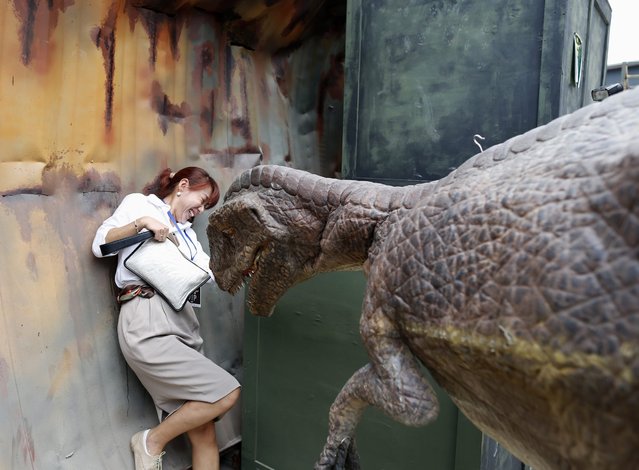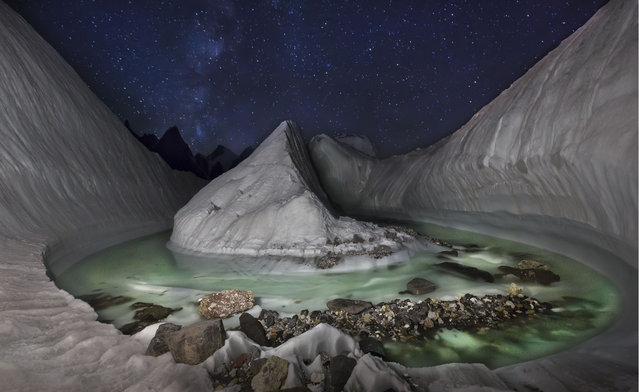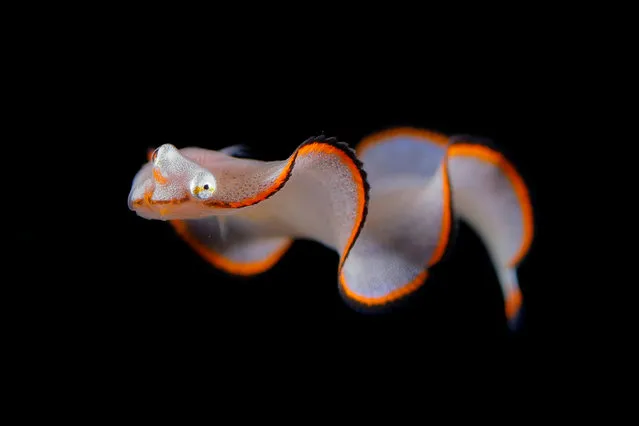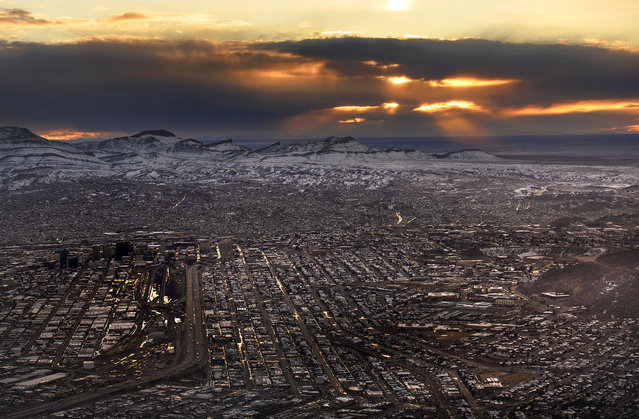
A Thai visitor appears to be frightened by a life-size Velociraptor model also known as Raptor at the Dinosaur Planet theme park in Bangkok, Thailand, 25 March 2016. The 500 million baht (14 million US dollars or 12 million euro) theme park opening in the Thai capital aimed to attract more than 15,000 visitors a day featuring a chance to experience more than 200 dinosaurs from various species that are brought back to life. (Photo by Rungroj Yongrit/EPA)
26 Mar 2016 13:33:00,post received
0 comments







